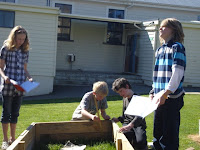Statistics Reflections
My favourite graph was the strip graph because it is quick, easy to understand, and it can be turned into a bar graph! This is a good way to learn about two different graphs
in a fun way!
By Ali
I now know how to view data on strip graphs,pie charts and line graphs! I have had loads of fun learning about staistics and have learnt lots about it.By Lili.
It has been fun using all different strategies and also statistics,I can figure more things out with statistics and I love using the bar graph to see who likes more and likes less.Everything in maths in Room 1 can be easy,challenging and the best thing about it,is it is FUN!!!!!!
By Bryn.
A new thing I have learnt is how to do a dot plot, stem&leaf graph and a strip graph.
By Harry.
My favourite graph is a strip graph because you can turn it into a bar graph.
By Bradley.
My favourite graph is a dot plot beacause it is quick and easy. By Oliver
I now know how to use a pie, stem and leaf and line graph and present them in my work.
By Seamus.
My favourite graph was the strip graph because you could cut it up and turn it into a bar graph.
by Matt.M



 We are learning about 3 dimensional shapes. We know that vertices's are the corners on a shape. A few shapes that have vertices's are a pyramid, a cube and a octahedron. An edge is the part along the side or end of a shape, and a face is one of the flat sides on a shape. we had lots of fun learning about 3 dimensional shapes.
We are learning about 3 dimensional shapes. We know that vertices's are the corners on a shape. A few shapes that have vertices's are a pyramid, a cube and a octahedron. An edge is the part along the side or end of a shape, and a face is one of the flat sides on a shape. we had lots of fun learning about 3 dimensional shapes.




















